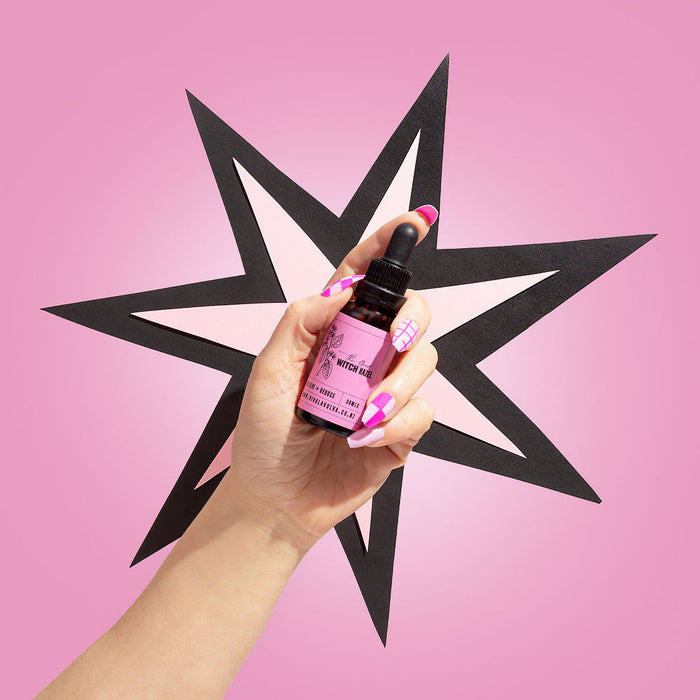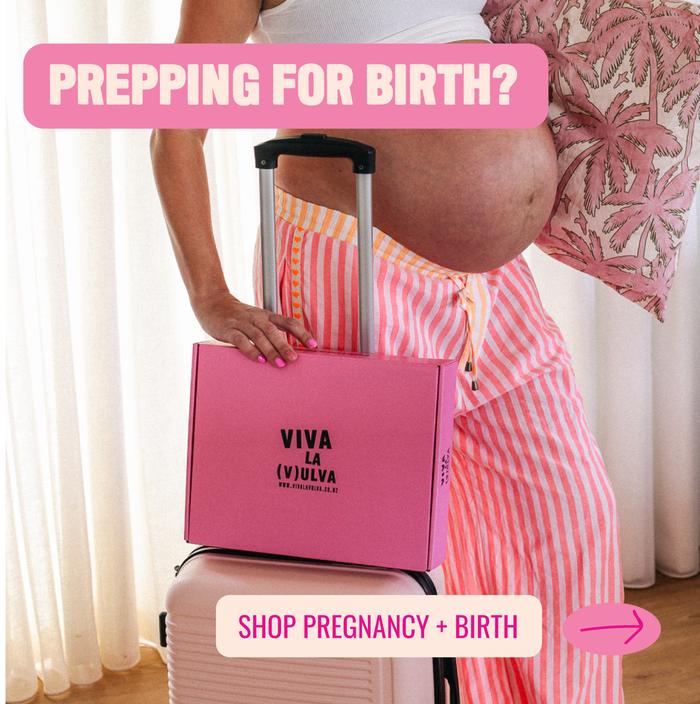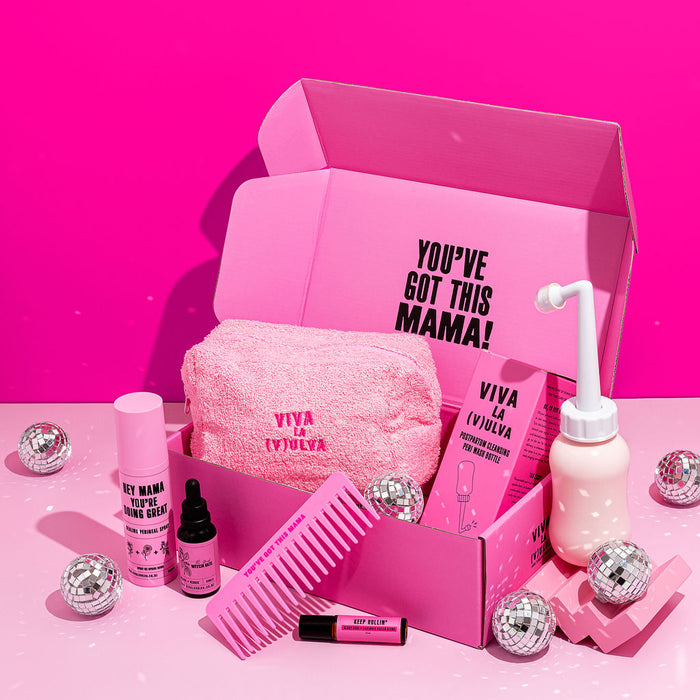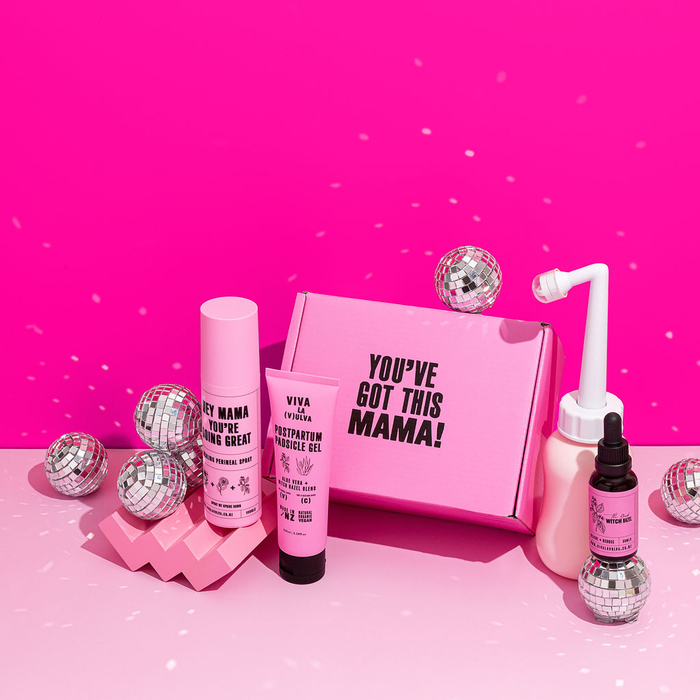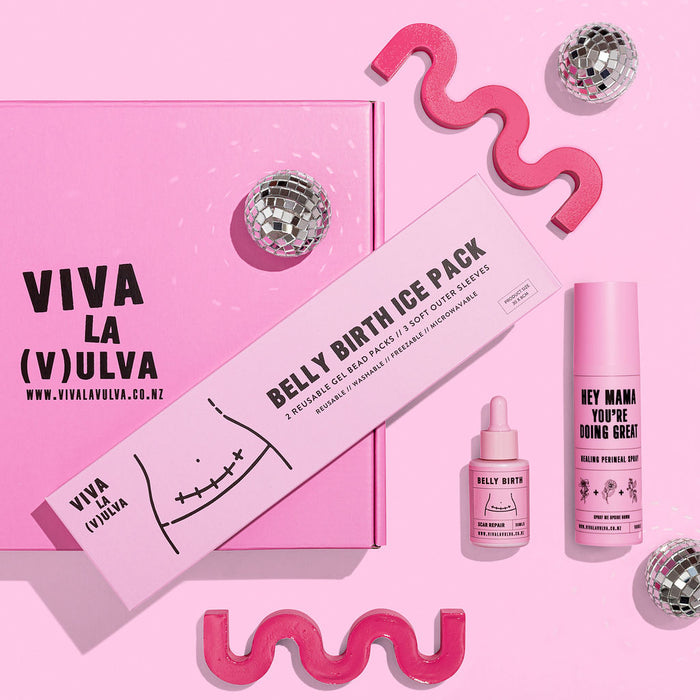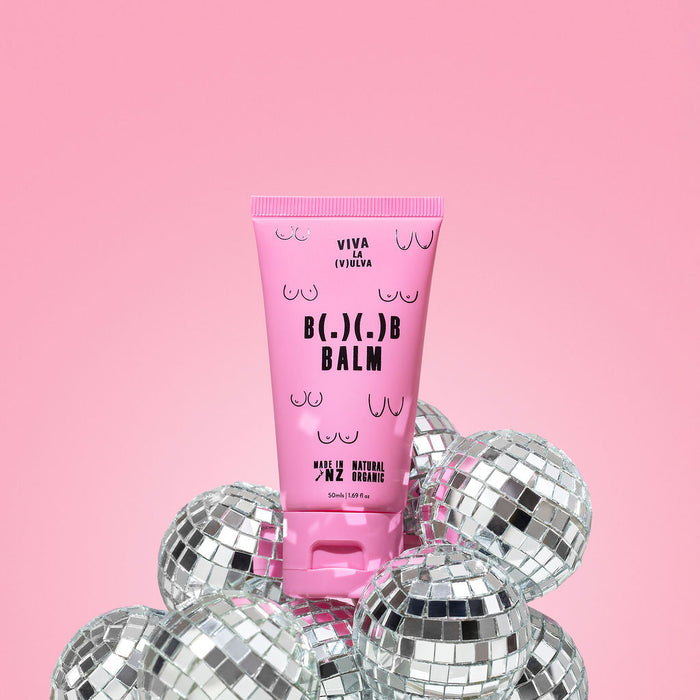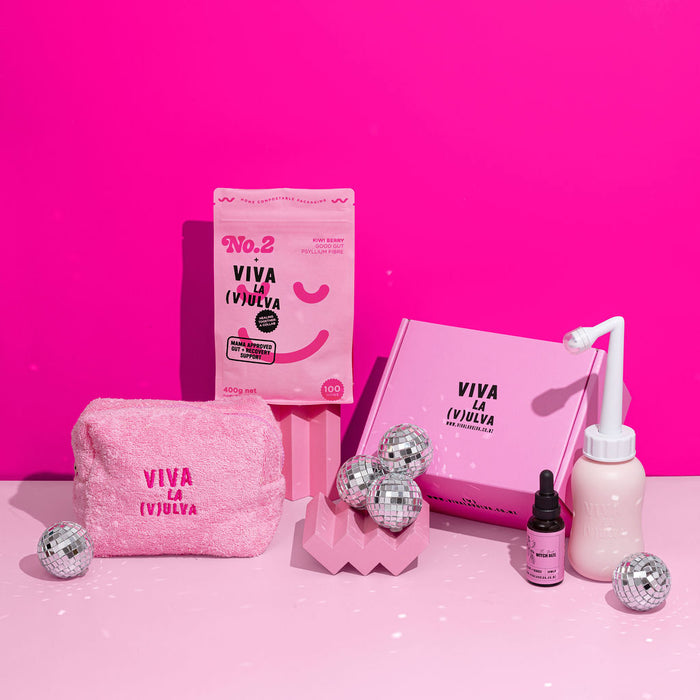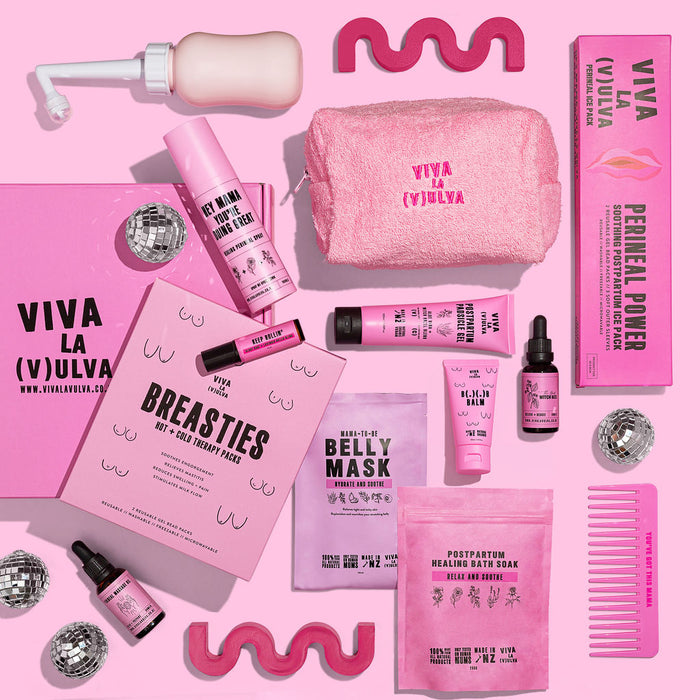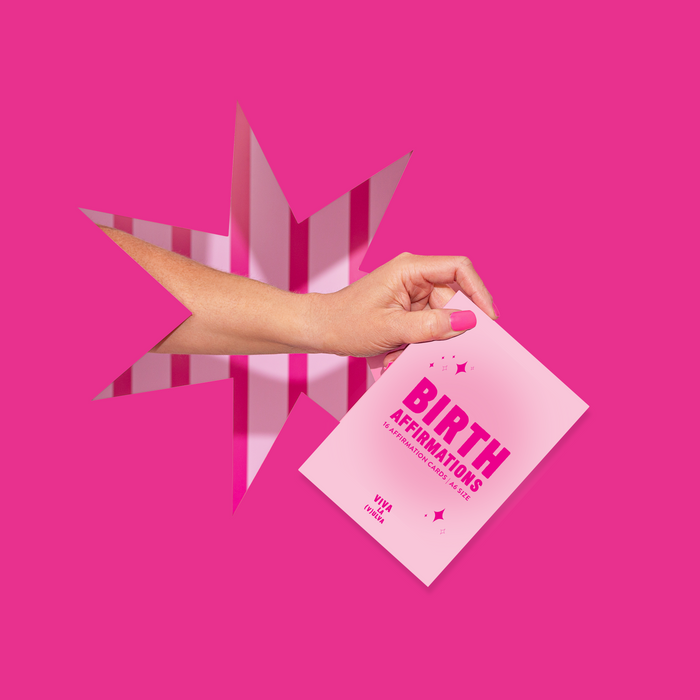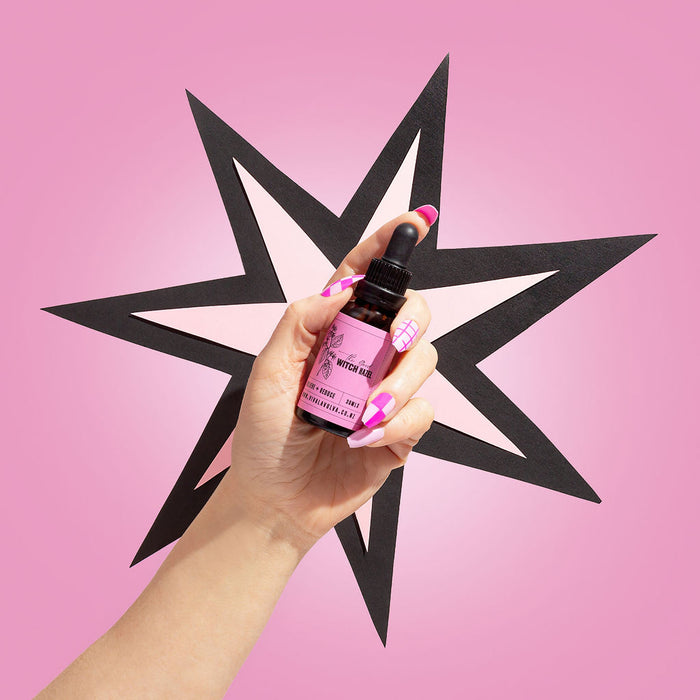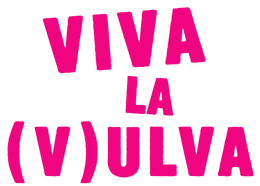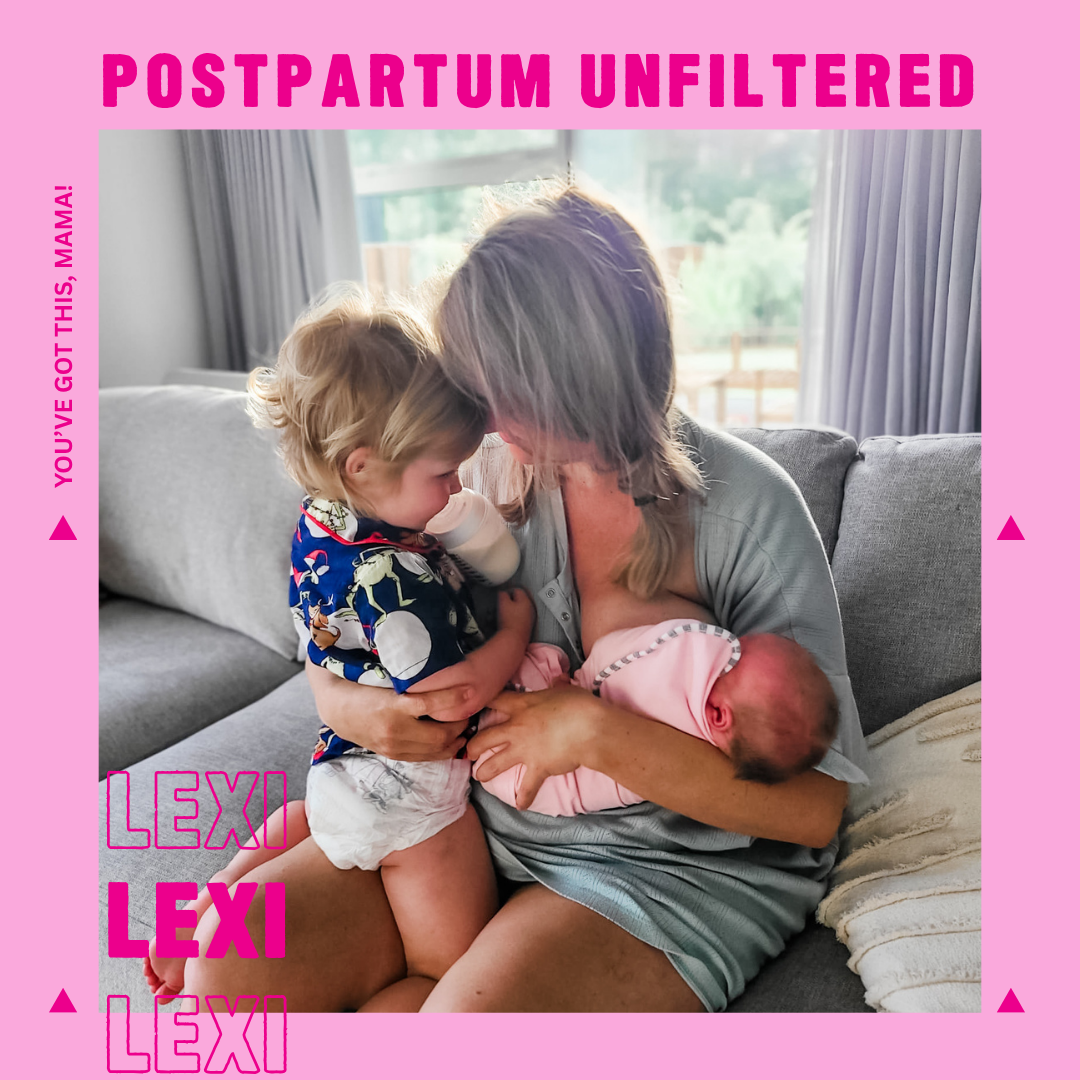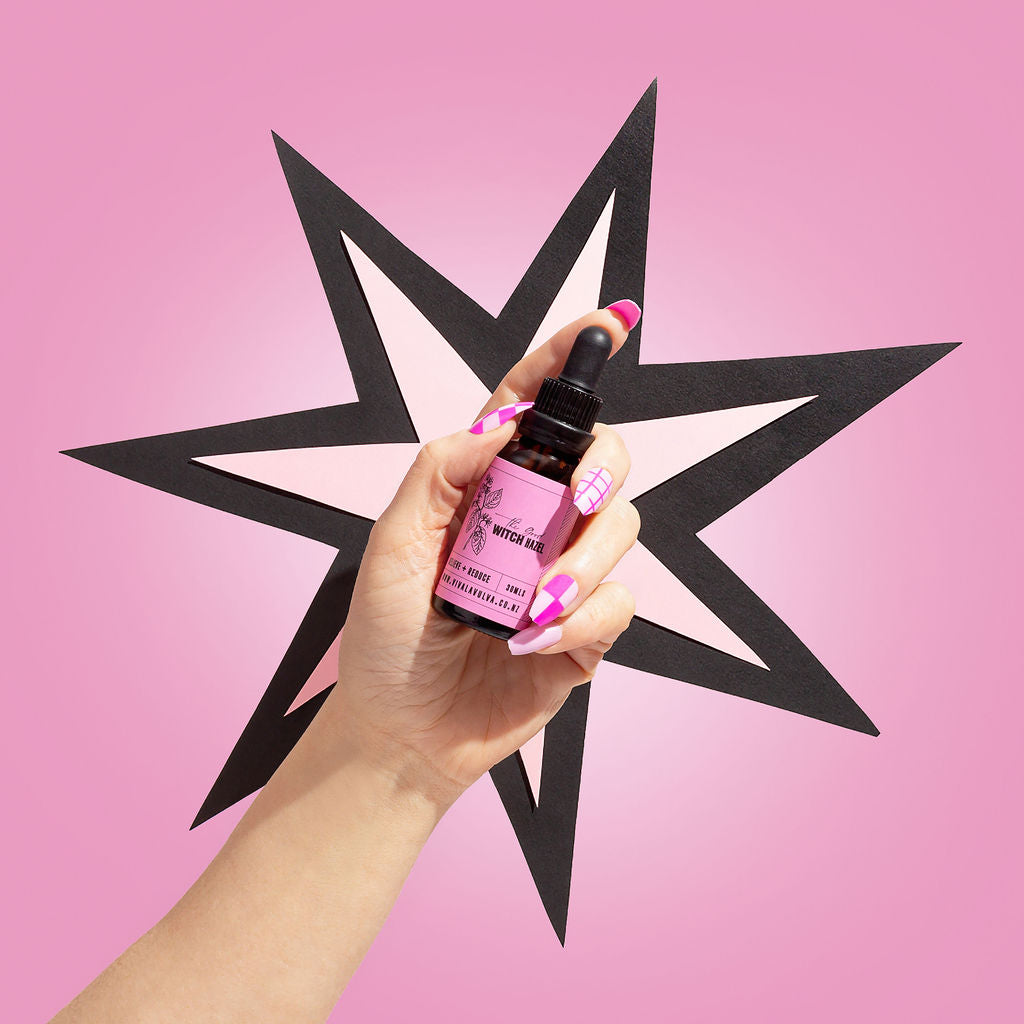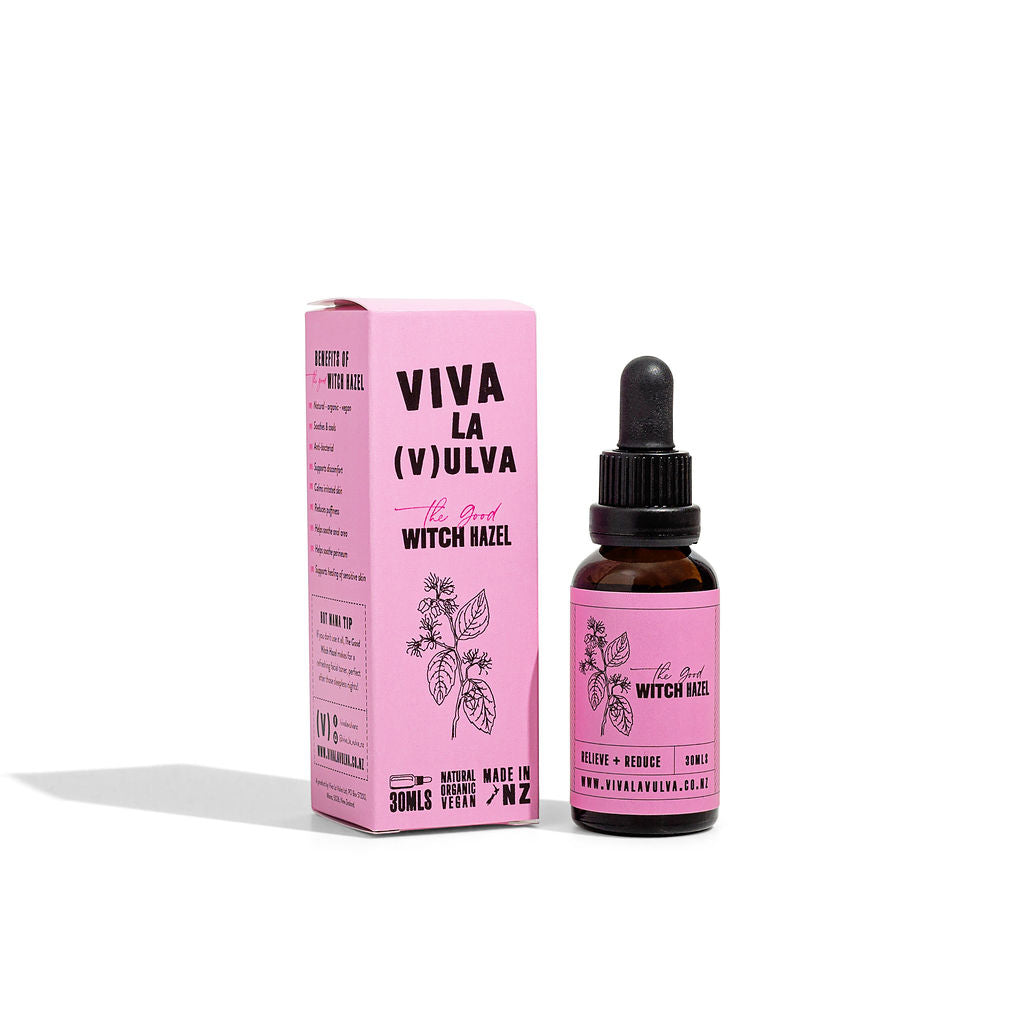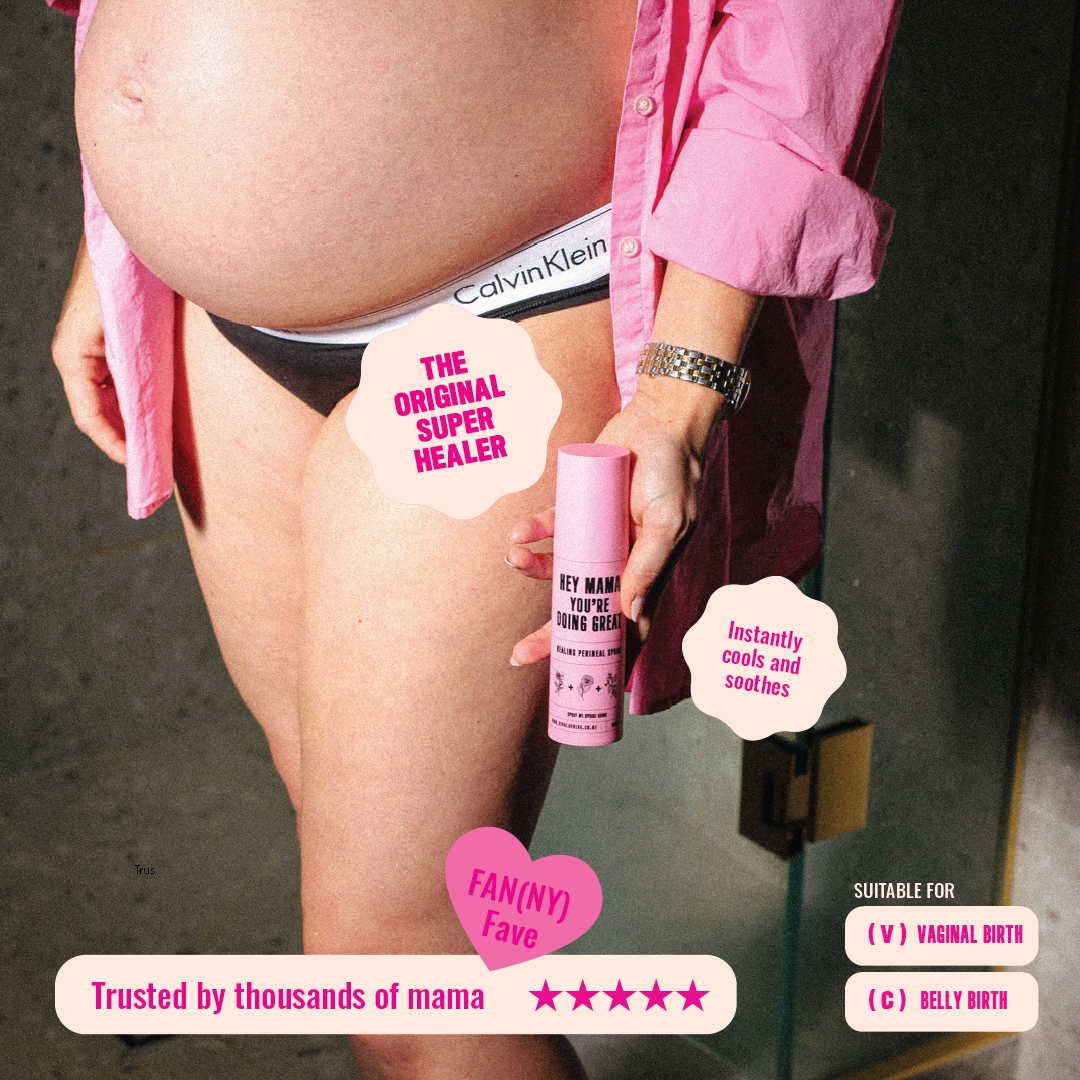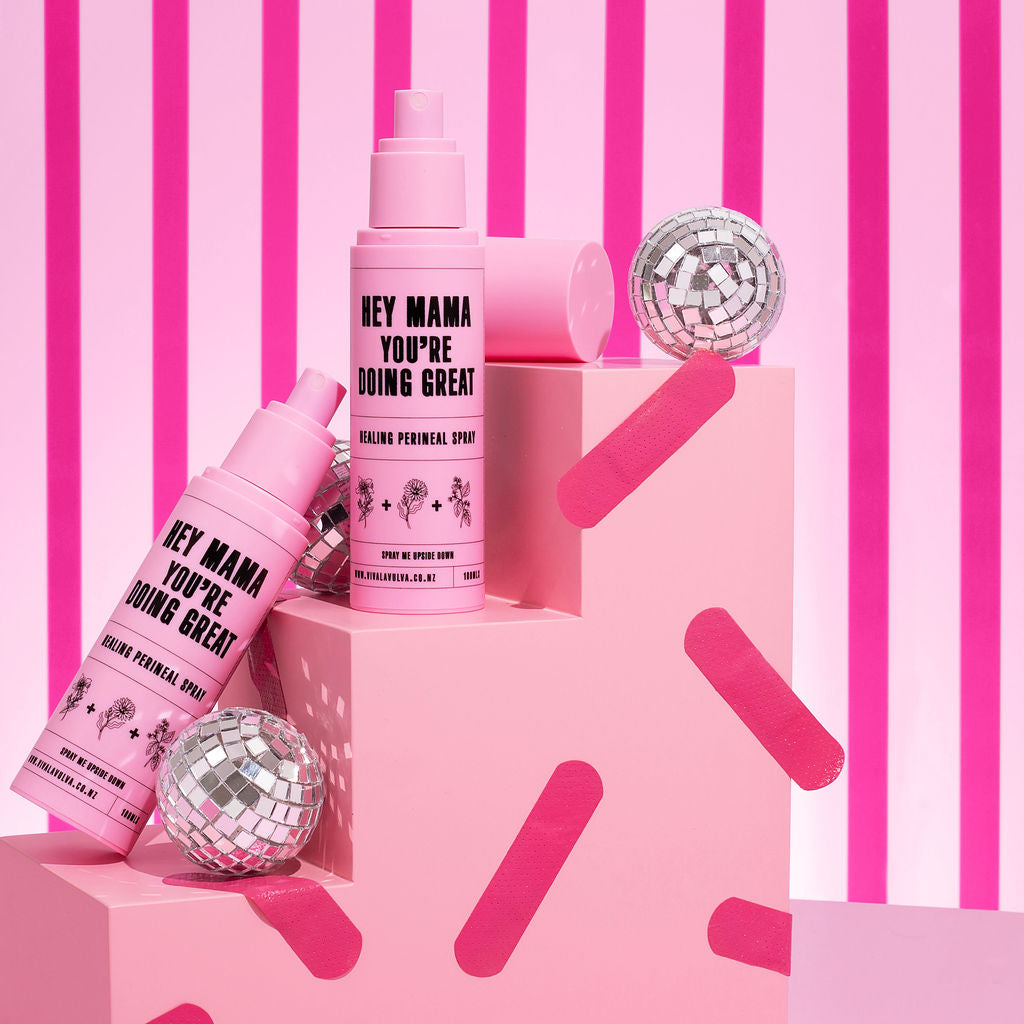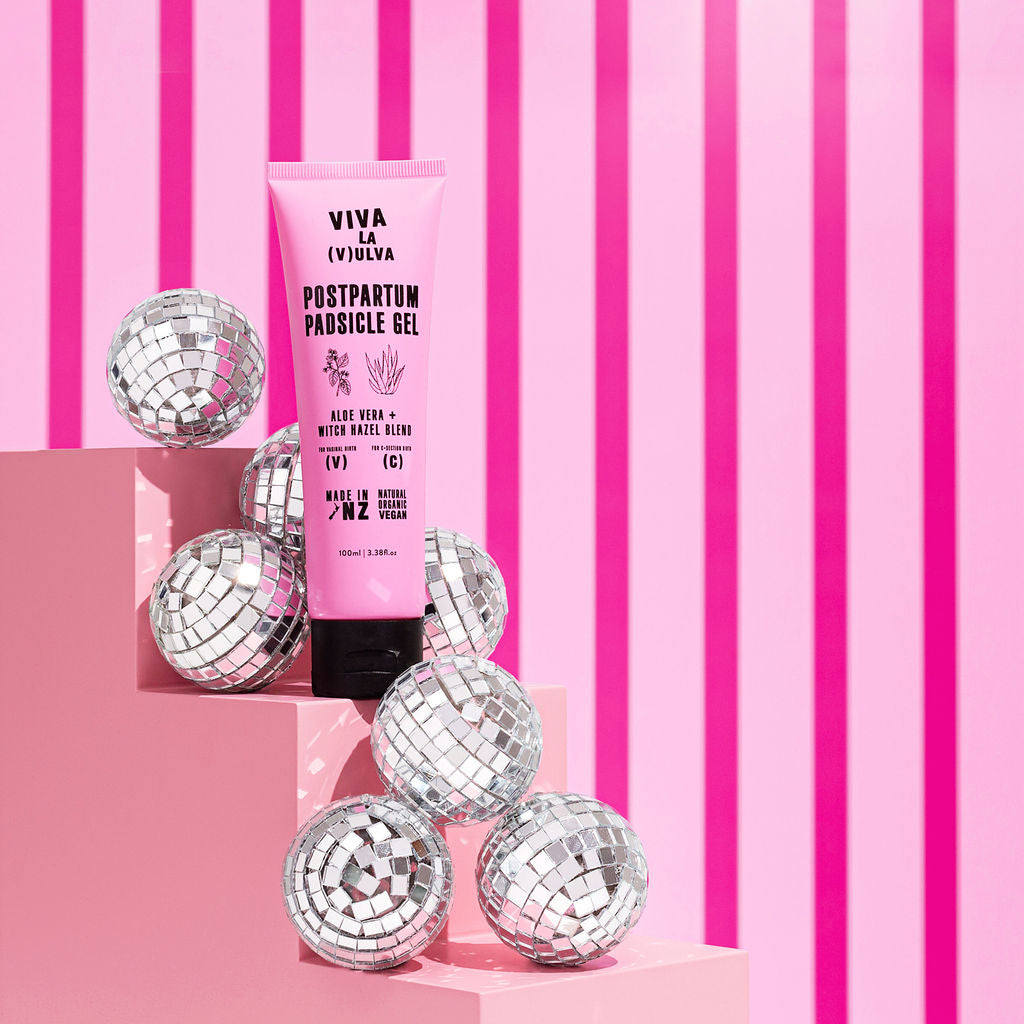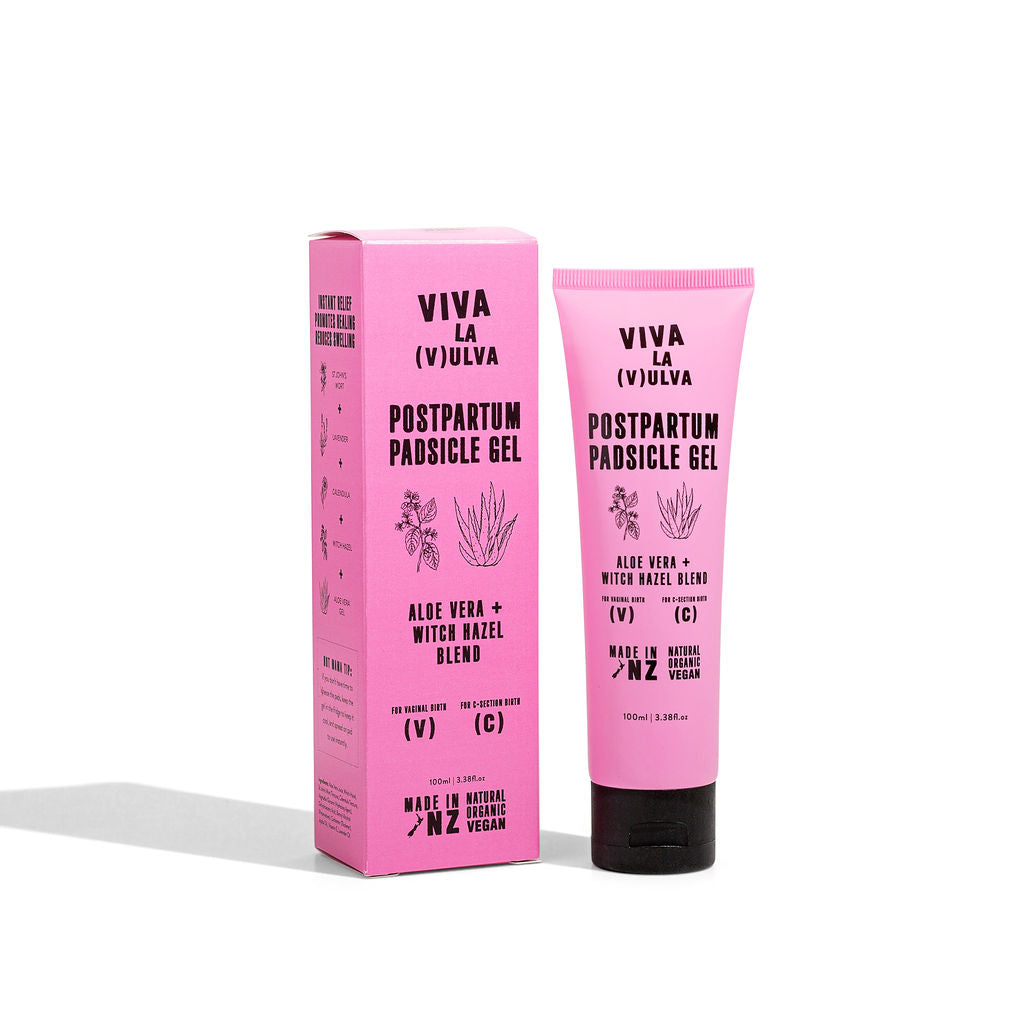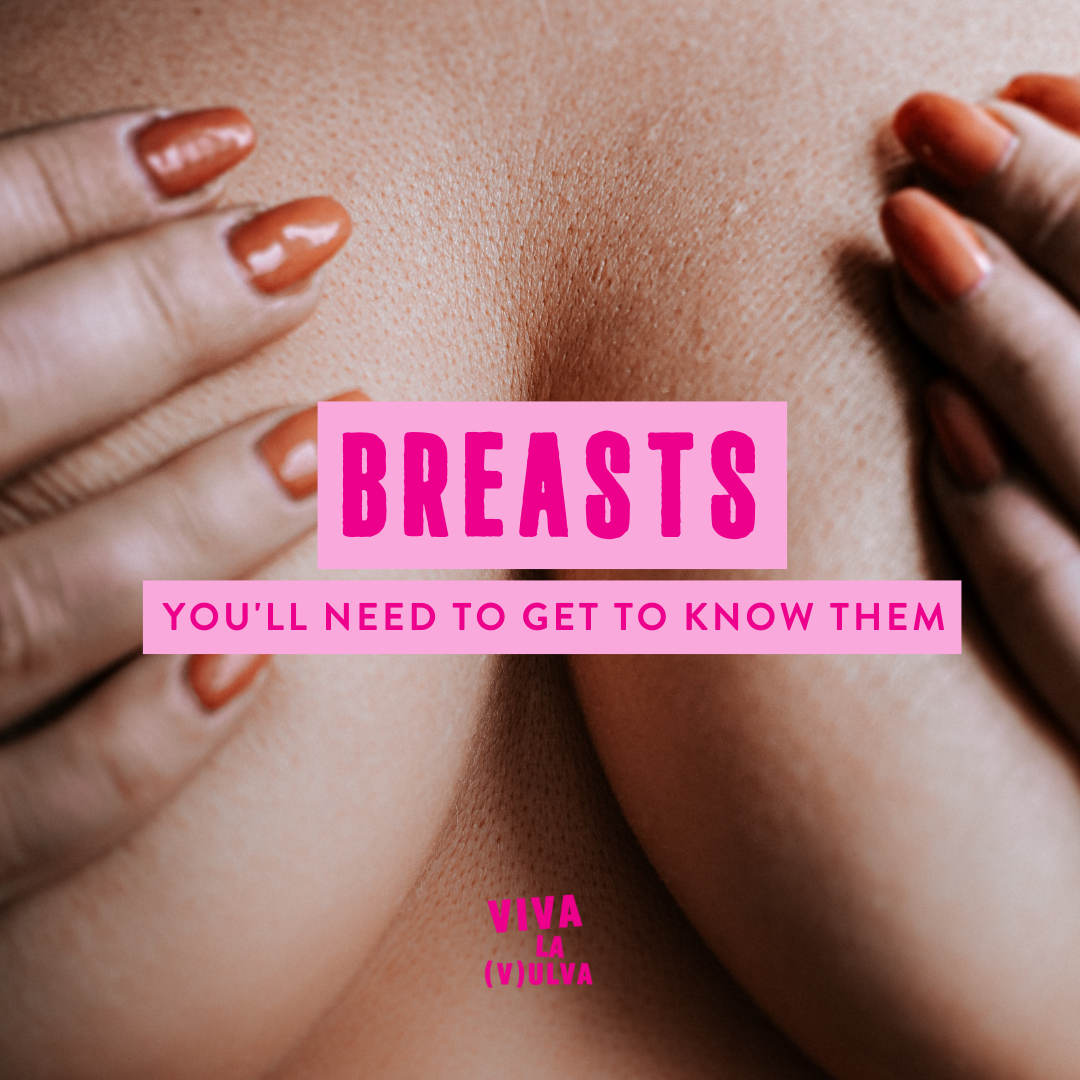
Breasts, You'll Need To Get To Know Them
Hey mama! This is Part 4 of our Viva La Vulva prepared for postpartum series, we’re talking about all things breasts, what to look out for, feeding baby, colostrum, mastitis, nipple pain, engorgement and more.
Viva La Vulva’s prepared for postpartum series offers real talk about what to expect, tips and tricks to help you navigate changes and ways to prepare for all things postpartum!
Having a baby is exciting, yes, and it’s also a huge adjustment. And at Viva La Vulva we believe an educated mama is an empowered mama! Just as all pregnancies and births are completely unique, all postpartum journeys are too. How you deliver your baby will affect the way you heal and recover. We want to make sure you go into the fourth trimester (and beyond) as prepared as you can be knowing exactly what to expect from your body in the weeks and months after birth.
While it’s totally necessary to educate yourself about pregnancy, labour and birth, preparing for postpartum is essential! You are giving your future self the best possible chance at healing comfortably and transitioning to motherhood gracefully.
Your body changes a lot after you give birth, changes that are physical and emotional. In Part 4 of our preparing for postpartum series, we are serving up some real talk about Breasts… We talk about what to expect, share tips and tricks to help you navigate these changes and offer ways to prepare and look after yourself and feed your baby!
Can we just say thank you for being here. And now that you’re here let’s take a quick minute to recognise 👏🏼 you and your incredible 👏🏼 body! If you’re growing a baby(ies), if you’ve recently birthed, or if you're well into your postpartum recovery journey please acknowledge yourself, you are an incredible mama, honour what your body has achieved, honour your mind, and celebrate both, because at Viva La Vulva WE ARE!
*Disclaimer. Mamas, please know that this information is not intended to act as or replace any medical advice, if you have questions or you are concerned at any time ask your lead maternity carer (LMC).
In case you missed previous parts of our Prepared for Postpartum series, we talked about Pelvic Floor and Prolapse, C-Section Delivery and Vaginal Delivery and what to expect and prepare for, READ MORE HERE.

BODY AFTER BABY AND WHAT TO EXPECT POSTPARTUM - AND WE’RE NOT TALKING ABOUT ‘BOUNCING BACK’
Let’s talk about some of the physical changes that you might experience in the weeks/months after giving birth, some ways to ease the discomfort and some postpartum essential items to have on hand to make it a little easier!
Your body is changing through pregnancy and birth. Growing a human, birthing that tiny human and healing… are all massive accomplishments! Mama, it is so important that you give yourself, and your miraculous body, the space and time to heal. And know it can take time to adjust to your body post-birth as things may look and feel a little different. Things may not go back to how they were before and that’s okay, please know it’s also okay to grieve your ‘pre-baby’ body. It’s all about nurturing your mind and nourishing your body at this time. Be kind to yourself, mama. Take your time, there is no rush!
Breasts, you’ll need to get to know them! We’re talking colostrum, breastfeeding, formula feeding, latching, engorgement, mastitis, nipple pain. You’ve probably noticed your breasts have gone up a few sizes and taken on a new look. That’s not all that’s going on there!
COLOSTRUM, LIQUID GOLD
Colostrum is a nutrient-dense fluid made by female mammals immediately after giving birth. This liquid gold is jam-packed full of immune-boosting properties and helps baby with growth and tissue repair. It’s a complex biological fluid that helps a baby develop immunity. With powerful immune-boosting properties, colostrum contains antibodies and provides protection against environmental germs and internal inflammation. It can contribute significantly to the healthy, long-term development of a baby.
Expressing antenatally means expressing some colostrum while you are still pregnant and storing it. Get guidance from your LMC on how to do this and if its a good idea for you. It is generally considered safe from about 36 weeks, mums who are having multiple births may start sooner as giving birth earlier is more likely.
How to express colostrum
Using your thumb on top of your breast and your forefingers underneath, gently press your fingers towards your chest. Compress the breast tissue, hold briefly and then release. Try not to squeeze or pinch the nipple. Collect the colostrum in either a sterile syringe or a clean container and store in the freezer, make sure to date each collection. Look up videos to get a better idea on how this looks.
Expressing colostrum antenatally helps you get to know your breasts, stimulates oxytocin, and allows you to have a supply of food for your baby if you are to have a c-section and your milk is slow to come in, or you need it for any other reason it can also help with breastfeeding in the long run. And mama if you try and try and nothing happens, or there is no colostrum coming out this is totally normal and does not mean you won’t be able to product milk once baby has arrived. So please don’t worry, go easy on yourself! Do what feels best for you and your body.
FEEDING BABY AND BREASTFEEDING
Learning how to feed your baby takes time, give yourself at least 6 weeks or more to get used to it. Remember you and your baby are learning something new together! Be gentle with yourself and get help from your LMC and/or lactation consultant if you need to. It definitely pays to do a bit of research ahead of time (watch videos of mothers bottle feeding and breastfeeding). Look into types of bottles/teats, how to formula feed, what type of formula, how to prepare a bottle, breastfeeding and what to expect, different ways to hold baby while feeding and signs of a good latch.
Here are some NZ resources to help you get started:
-
Download the Breastfed App
-
Connect with La Leche League (Free NZ Service)
-
Read Parents Centre Resources - Starting your breastfeeding Journey & Feeding Baby
-
Watch these breastfeeding videos from Health Navigator
-
NZ College of Midwives Breastfeeding FAQ’s
GETTING A GOOD LATCH
When breastfeeding a good latch is so important, it helps your baby get the most milk, and makes it more comfortable for you. It may take a little practice. If you are having any trouble, ask for help early on!
Signs of a good latch:
-
There shouldn’t be ongoing nipple pain, it should be comfortable to feed once you’re both used to it.
-
Baby positioning - your baby's chest and stomach rest against your body, so that baby's head is straight, not turned to the side.
-
Your baby's mouth opens wide around your breast, not just the nipple. *If only latched on to the nipple or it hurts just pop a clean pinky finger into side of baby’s mouth to break the latch and then try again. Do this as many times as you need until it feels more comfortable.
-
Your baby's lips turn out.
-
Your baby's chin touches your breast.
-
Your baby's tongue cups under your breast.
-
You hear or see swallowing.
-
Your baby's ears move slightly when feeding.
If you’re having trouble getting a good latch, try:
-
Making sure you are feeling relaxed and comfortable really helps with getting a good latch and just helps with breastfeeding in general. Grab pillows to prop yourself up and make sure you are in a position you can happily sit in for 45 mins or longer before getting the baby ready to feed!
-
Move to a quiet, calm place.
-
Holding your baby skin to skin, this helps you bond.
-
Let your baby lead. Support your baby's neck, shoulders, and hips with your hands. Offer your breast, but let your baby find your nipple on their own.
Hot Mama Tip: Do your breastfeeding research before the baby arrives to take some of the pressure off and have a few ideas up your sleeve. Better than trying to google ‘how to breastfeed’ or ‘how to get a good latch’ in the middle of the night, crying with your newborn, leaking everywhere, with super sore nipples! Trust us - we’ve been there.
Make sure you have snack stations and water set up where ever you feed!
NIPPLE PAIN
If breastfeeding, nipple pain is common in the first few days and weeks as your nipples adjust to frequent feedings. As baby latches it may hurt for the first 10 seconds or so and then pain should ease if baby is latched correctly. This initial pain when latching should subside over time. Sad to say it mamas, nipples can also crack and even bleed in the first weeks of breastfeeding. And no you don’t need to rub them with anything to ‘toughen them up’ beforehand, that will just stress the skin out more!
Nipple pain: Tips & Tricks, ways to be prepared & alleviate pain
-
Adjust your baby's latch - get help from your LMC or a lactation consultant to make sure your baby is latching on to your breast the right way.
-
Use Boob Balm, which is all-natural (safe for baby) and designed to nourish and soothe breastfeeding nipples.
-
Try nipple shields to continue feeding while your nipples are healing.
-
Try Silverette cups between feeds to help with healing.
-
Massage some breast milk into your nipples and air dry, your breastmilk has magical healing powers and is!
-
If nipple pain worsens after the early days of breastfeeding your nipple pain may be due to other causes like thrush, bacterial infection, or tongue-tie. Check with your LMC if you are unsure or experiencing continuous pain when breastfeeding.
ENGORGEMENT
After birth, your breasts swell as they fill with milk and they can feel tender and sore. They can also feel really solid (almost rock hard) if your milk comes in fast. This can happen straight after birth or in the few days following birth. This is breast engorgement. The discomfort usually goes away once you start breastfeeding regularly. If you're not breastfeeding the discomfort may last for a few days until your breasts stop producing milk. Now's the time to grab your Breasties!
Some women find their milk is delayed after birth - lots of skin-to-skin contact and frequent nursing/pumping can help bring your milk in. Talk to your LMC if you’re worried at any point.
Once your milk is in, leaking/spraying may occur between feeds until your milk supply has regulated and even beyond for some. Grab some comfy reusable breast pads to help mop up the extra milk and keep you dry!
Be prepared that your breasts may or may not return to pre-pregnancy/breastfeeding size and will most likely change shape, some get tiger stripes, some stay larger and some shrink. It’s all normal and beautiful!
Engorgement: Tips & Tricks, ways to be prepared and alleviate pain
-
Breastfeed your baby regularly, try not to skip night feeds, or go too long between feeds. Make sure you drain each breast when you feed, alternating sides.
-
Grab your breasties to ease the discomfort with hot or cold therapy. Cold therapy is great if you’re really engorged. Heat therapy helps with milk flow. Do what feels good for you.
-
Take a warm shower and run water over your breasts to help with milk flow.
-
Before you breastfeed baby, pump/or hand express a small amount of milk this helps with flow and can alleviate a little pressure.
-
Only wear super comfy tops/bras that fit correctly. If bras don’t feel comfy don’t wear them!
-
Let your LMC know if your breasts stay swollen and are painful.
MASTITIS
So you’ve got your head around engorgement, there's also mastitis to look out for. Mastitis, unfortunately, is common, and approximately 1 in 5 women are affected. Mastitis usually occurs in the first 3 months of breastfeeding when cracked nipples and breast engorgement are most common, we hate to say it mama, but it can also happen more than once so be aware.
Mastitis is a painful infection of the breast tissue and needs to be treated as such. Breast pain, swelling, warmth, fever, and chills are the most common symptoms. Talk to your LMC if you get a sore breast, flu-like symptoms or have any red or lumpy areas in your breast. Mastitis is thought to be caused by blocked milk ducts or bacteria entering the breast. As painful as mastitis is, and it may cause you to question your commitment to breastfeeding, continuing to breastfeed/pump can help heal mastitis, and stopping breastfeeding can make it much worse. Your breastmilk is safe for baby even if you have mastitis.
Mastitis: ways to be prepared & alleviate pain
-
As it is an infection mastitis is treated with antibiotics and mild pain relievers. Talk to your LMC if you suspect mastitis.
-
Continue breastfeeding/pumping every two hours if you can.
-
You can also apply wet (a warm shower/bath) or dry heat. Breasties come in handy here. Try applying heat 15-30mins before nursing to help loosen the blockage and then apply a cold pack after nursing for 15-30mins to bring any swelling down.
-
Take a bath with Epsom salts.
-
Massage, massage, massage. Try a massage in a warm shower. Try massaging the affected area toward the nipple during nursing or pumping, and alternate with compression around the edges of the blockage to break it up.
-
Resting and drinking lots of water will help your body fight the infection.
-
Add a few drops of Witch Hazel to warm water in a hand breast pump, Witch Hazel may help reduce the swelling, help repair skin and fight off bacteria.
-
You could also try Vitamin C, probiotics, and other natural remedies that help build your immune system up and fight off infection.
Postpartum healing can be a bid adjustment mama. Having this info up your sleeve is especially important when you might be functioning on little to no sleep, caring for your newborn, leaking here and there and everywhere, managing pain and healing. We get it! Remember our pregnant/postpartum bodies are working hard for us, doing an incredibly important job and deserve to be celebrated, tiger stripes, wiggly bits and all! At the end of the day, it’s about celebrating the wins, acknowledging the unpredictable nature of childbirth, acknowledging what comes after and celebrating our bodies and our unique journeys to motherhood. These experiences are ours.
We are so glad you’re here because being aware of and prepared for what happens postpartum can seriously help alleviate feelings of overwhelm, stress, anxiety and empower you with the tools/knowledge to care for yourself. MAMA, you have got whatever postpartum throws your way.
Next up in Viva La Vulva’s preparing for postpartum series, we’ll be putting a spotlight on other weird and perhaps not so wonderful things to look out for postpartum. Stay tuned.
xx VLV
*Checkups with your LMC are super important. Many discomforts and body changes are normal but new mums can be at risk of serious health complications in the days and weeks after birth. If anything doesn’t feel quite right, always, always ask. There are no stupid questions when it comes to your health.
